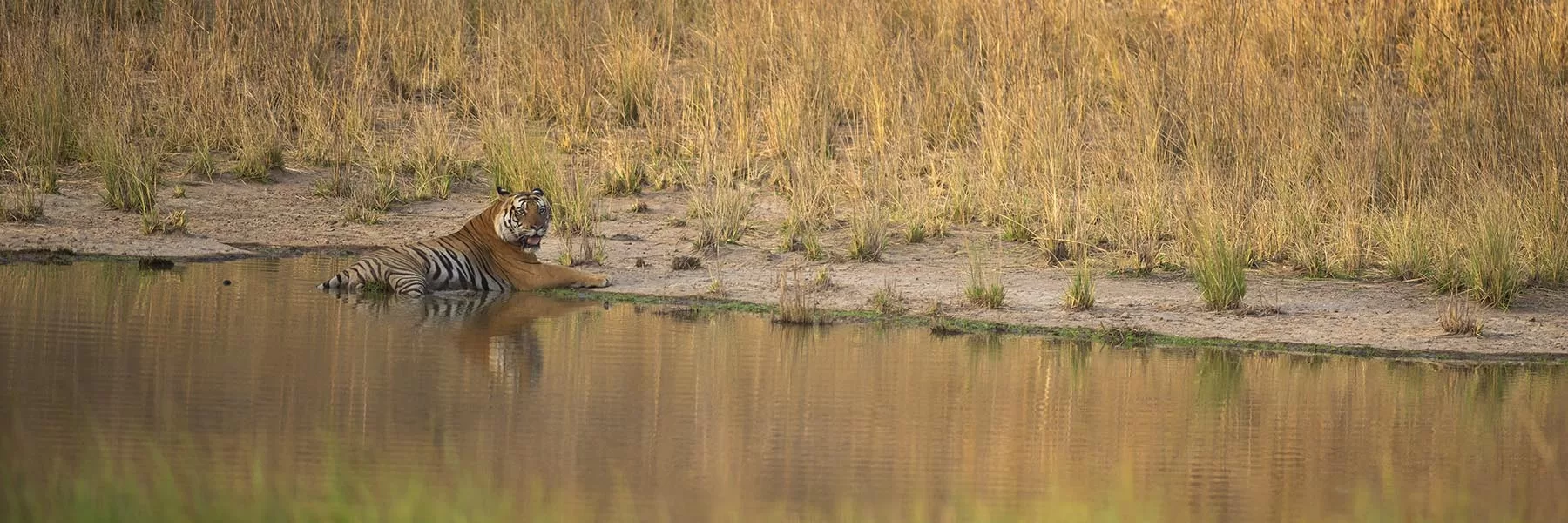Bandhavgarh National Park, located in the Umaria district of Madhya Pradesh, became a Tiger Reserve in 1993. With a core area of 716 square kilometers, the region has tremendous biodiversity. The density of the apex predators, Tigers, is among the highest here. The vast grasslands and bamboo forests make it easy to spot tigers here. Around 35-45 tigers live in the tiger reserve area of Bandhavgarh. We share some of the most iconic Tigers of Bandhavgarh, whose legends are as iconic as Bandhavgarh itself!
Charger and Sita
Named so because of his habit of mock-charging at elephants and tourists, Charger was the first healthy male living in the region in the 1990s. He is one of the most photographed tigers in the world and even appeared on the cover of National Geographic magazine. After ousting the then-dominant male, Banka, Charger became the dominant make after several nights of fights and growls. He ruled the area from 1991-99, along with his mate, Sita. Almost all the tigers in Bandhavgarh today are the descendants of Charger and Sita. Sita perished from poaching wounds, and Charger died of old age in 2000, following which his body was buried at “Charger Point”.

Charger Bandhavgarh
B1, B2, and B3
Charger and Sita’s son, B2 served as the dominant male between 2004 and 2007, after he fought for territory with his father. He became the strongest tiger in the world. He had a strong dislike for harsh sounds, like those of vehicles, and often attacked them. Multiple incidents were reported of B2 attacking vehicles. Upon reaching old age, he fought with another male and received multiple injuries. He perished as he was being taken for treatment. B1 and B3, the other two sons of Charger and Sita had to contend with regions outside B2’s territory, as they could never rise against the might of B2. B1 later died of electrocution, while poachers killed B3.

B2 Tiger
The other descendants of Charger and Sita were- Langru, famous for his limp, who was nursed by his parents even when he reached 4 years of age, Pyari, Reshma, and Mohini. Mohini was an especially beautiful tigress, and she mated with the male tiger Mahaman. She died due to wounds sustained from a vehicular accident.
Bamera
B2 produced his son Bamera, upon mating with a female from the Siddhababa region. Bamera was first sighted in 2008, and became the dominant male, following B2’s departure. Until his recent death, Bamera was one of the most prominent tigers of the region, and encounters with him were quite common.

Bamera bandhavgarh
Bokha
Bokha rules over the Magdhi region of Bandhavgarh, and tourists have reported spotting his giant pugmarks while on safari in the region. He gets his name from a broken tooth, which happened after his fight with another tiger. He had numerous conflicts with B2 from the Tala zone area.
Spotty and Dotty
Spotty, a bold and beautiful tigress, spotted in the Tala region, gets her name from a “T” mark above her right eye. She is the daughter of the male tiger Blue Eyes and female Sukhi Pateeha, descendants of Charger. This majestic female is a proud parent of three females, who’ve grown up and moved on. Her mate, Mangu is the dominant male of Tala. Spotty shares the region with her sister, Dotty.

Spotty Tigress
Other tigers who are commonly seen in the Tala and Magdhi region are Banbehi, Mirchaini, Rajbehra, Mahaman, Damdama, and Sukhi Pattiya. Numerous cubs are in the sub-adult stage, while some have attained adulthood and moved on.
If you loved reading this story, then subscribe to our blog here (it will ask to verify your email) to get inspiring travel stories and trivia delivered to your email. Stories about wildlife trivia, cultural experiences, curated luxury hotel lists, underrated places to travel, polar journeys and much more.











